Never have I ever seen so many Garmin Edge units in one place, than is on show at the Tour Down Under this year. That’s of course partly because Garmin in recent years has shifted away from being a major sponsor of a single team, to instead going for minor sponsorships of basically almost all the teams. However, it’s not just Garmin that has ramped up their strategy. Wahoo has continued to expand its WorldTour (and beyond) teams, up to three this year. And then beyond that we’ve got Stages, Sigma, Bryton, and SRM filling out the rest.
When a bike passes by me, I’m rarely looking at that person’s frame – but instead, what’s on their handlebars. And the Tour Down Under is packed with handlebar gazing. Though, I could see how at the wrong angle that probably looks like crotch watching. Still, that’s my job apparently.
Now, unlike aspects such as bike frames or power meters, the riders actually do have a bit of choice with some of their bike GPS unit selection. For example, both Garmin and Wahoo allow riders to choose whatever head unit they’d like within the current crop of units. In the case of Garmin, riders can choose from the Edge 130, Edge 530, Edge 830, and Edge 1030. While for Wahoo users that’s largely between the Wahoo ELEMNT BOLT and ROAM (none that I saw selected the older original ELEMNT). While I didn’t ask Stages, I presume that they can select any of the current model Dash’s as well, though I only saw Dash M50’s on-hand (as opposed to L50’s or L10’s). For Sigma, the sponsorship is specifically the SIGMA ROX 12, which is honestly the only Sigma bike GPS you’d want anyway (and it’s a good one).
With SRM, those teams are all PC8 only, logical since everything else would be significantly old and stinky. Whereas for Bryton they’ve got them on Rider 420’s for now, but expect to shift later in the season to Rider 860’s once those units are ready.
The List:
For inventory purposes I tried to find as many bikes as possible. Remember with pro riders and head units, they don’t leave them on their bikes when unattended (for the most part), and most riders don’t tend to just sit on their bikes in a big bunch in one static spot. So for Garmin ones, there may be an odd duck who is on (for example) an Edge 130 when the rest of the team is rockin’ Edge 830’s. I saw more Edge 130’s than I expected out there.
AG2R La Mondiale: Wahoo BOLT
Astana Pro Team: Garmin Edge 1030 & Edge 530
BORA-hansgrohe: Wahoo BOLT
CCC Team: Garmin Edge 1030
Cofidis Solutions Credits: SRM PC8
Deceuninck – Quickstep: Wahoo BOLT & ROAM
EF Education First: Garmin Edge 1030
Equipe Cycliste Groupama-FDJ: Garmin Edge 1030
Israel Start-Up Nation: Bryton Rider 420
Lotto-Soudal: SRM PC8
Mitchelton-SCOTT: Garmin Edge 530 & Edge 130
Movistar Team: Garmin Edge 830 & Edge 1030
NTT Pro Cycling: Garmin Edge 830
Team Bahrain-McLaren: Garmin Edge 830
Team INEOS: Garmin Edge 1030 and Edge 830
Team Jumbo-Visma: Garmin Edge 830
Team Sunweb: SIGMA ROX 12
Trek-Segafredo: Garmin Edge 830
UAE Team Emirates: Stages Dash M50
UniSA-Australia: [Composite team, riders BYOGPS]
Here’s a quick gallery of most of the teams above. There’s a few that may be missing from below if I didn’t get great close-up shots of them. I’ve got a full walk-through video where you can see every team though one after another that I’ll be uploading shortly. You can hover over for the exact team name and model number.
And here’s the break-out by brand:
Garmin:
*Astana Pro Team: Garmin Edge 1030 & Edge 530
CCC Team: Garmin Edge 1030
*EF Education First: Garmin Edge 1030
Equipe Cycliste Groupama-FDJ: Garmin Edge 1030
*Mitchelton-SCOTT: Garmin Edge 530 & Edge 130
*Movistar Team: Garmin Edge 830 & Edge 1030
*NTT Pro Cycling: Garmin Edge 830
Team Bahrain-McLaren: Garmin Edge 830
*Team INEOS: Garmin Edge 1030 and Edge 830
*Team Jumbo-Visma: Garmin Edge 830
*Trek-Segafredo: Garmin Edge 830
*These teams are official Garmin sponsored teams, the remainder are using them just because. Also note that for this year Garmin and Tacx technically have different sponsorships for some teams. There are overlap on some, but not all (for example, Lotto Soudal is a Tacx team but uses SRM head units/power meters).
Wahoo:
AG2R La Mondiale: Wahoo BOLT
BORA-hansgrohe: Wahoo BOLT
Deceuninck – Quickstep: Wahoo BOLT & ROAM
*All of the above are official Wahoo sponsored teams.
SRM:
Lotto-Soudal: SRM PC8
Cofidis Solutions Credits: SRM PC8
*All of the above are official sponsored SRM teams.
Stages:
UAE Team Emirates: Stages Dash M50
*UAE is an official Stages Sponsored team.
Sigma:
Team Sunweb: SIGMA ROX 12
*Sunweb is an official sponsored Sigma team.
Bryton:
Israel Start-Up Nation: Bryton Rider 420
*Israel Start-Up Nation is an official sponsored Bryton team.
Got all that? Good.
Wrap-Up:
For the most part, just like power meters, team GPS units are driven by sponsorships. However, about 1/3rd of the teams using Garmin GPS units are actually not sponsored by Garmin. They’re just using them for whatever internal reasons. One strong reason it’s likely that those teams are using Garmin is the integration with VeloViewer, specifically within the framework of the team platform that 17 of 19 WorldTour teams are using this year. That platform allows them to create and mark course details for both the team cars (using an iPad in real-time during the race), but also the riders on their GPS units. Historically speaking Wahoo didn’t have the same navigation and mapping capabilities as Garmin. Whereas with the ROAM they’ve been able to catch-up a bit in that realm. Still, as I heard from some riders over the last few days, they definitely find value in specific features – namely ClimbPro was one I heard repeatedly from multiple teams/riders.
In the context of how these riders race, all of them have the course files loaded up required for ClimbPro. For example, the photo above was taken of one of the EF Education First rider’s bikes at the start of Stages 3, showing he had the course for that day’s stage ready and loaded. In fact, if you go back to the history of why certain teams haven’t been on Wahoo – Team INEOS (then Team Sky) had a number of very specific race-driven things they wanted that Garmin had that Wahoo didn’t. In a Wahoo ROAM world that gap has significantly closed, and I’d be willing to bet we’re going to see some features in 2020 end up on Wahoo bike computers that speak to some of the minor gaps that pro teams have. The same is probably going to be true of Bryton, Sigma, and Stages too.
More and more these teams are actually using the features on their bike computers for racing and course awareness. It’s no longer just a bike computer running in the background. They get turn alerts, climb notifications, and more. And that’s before we even get into the wearable side of tracking that some teams are doing now (more on that next week). Of course, as always, at the end of the day these GPS units are just one part of a much larger moving puzzle to getting stage and race wins.
With that – thanks for reading!
FOUND THIS POST USEFUL? SUPPORT THE SITE!
Hopefully, you found this post useful. The website is really a labor of love, so please consider becoming a DC RAINMAKER Supporter. This gets you an ad-free experience, and access to our (mostly) bi-monthly behind-the-scenes video series of “Shed Talkin’”.
Support DCRainMaker - Shop on Amazon
Otherwise, perhaps consider using the below link if shopping on Amazon. As an Amazon Associate, I earn from qualifying purchases. It doesn’t cost you anything extra, but your purchases help support this website a lot. It could simply be buying toilet paper, or this pizza oven we use and love.

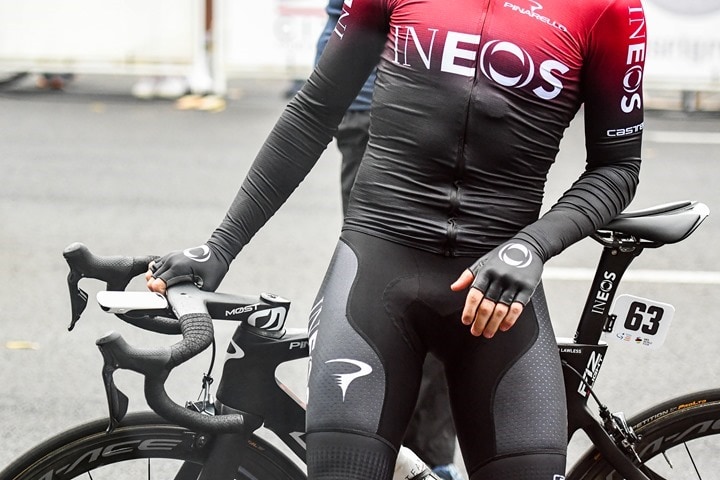
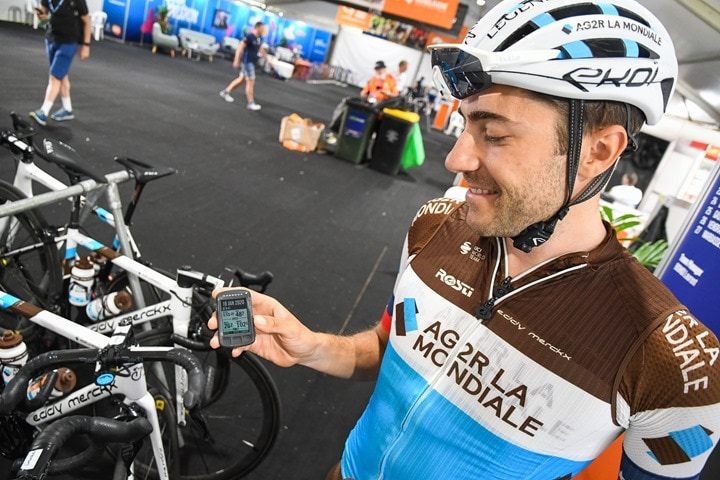

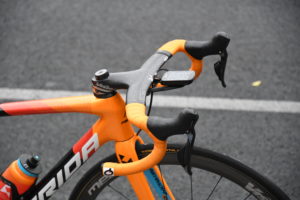
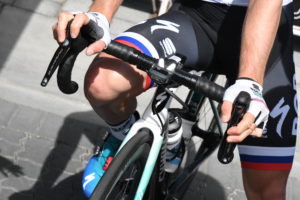
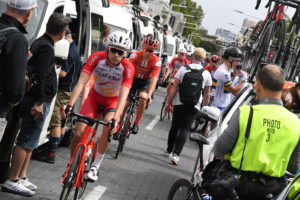
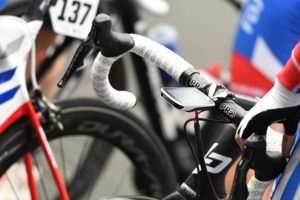
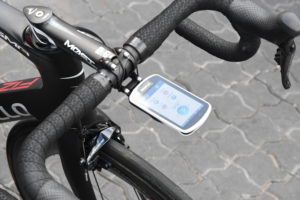
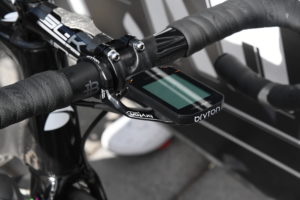
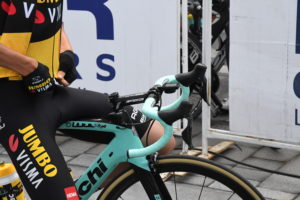
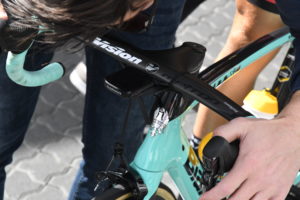
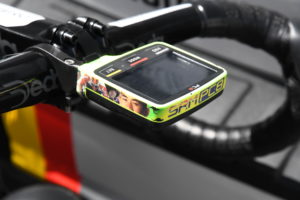
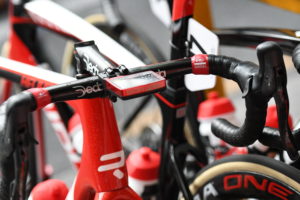

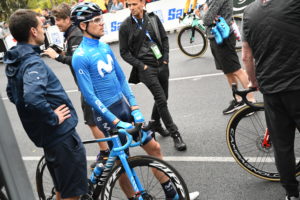



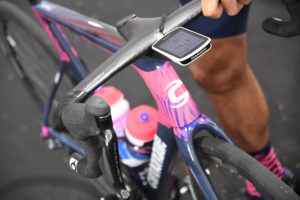
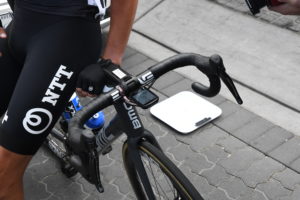
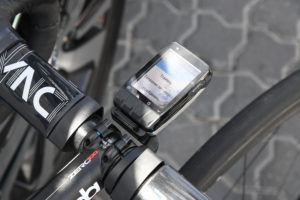
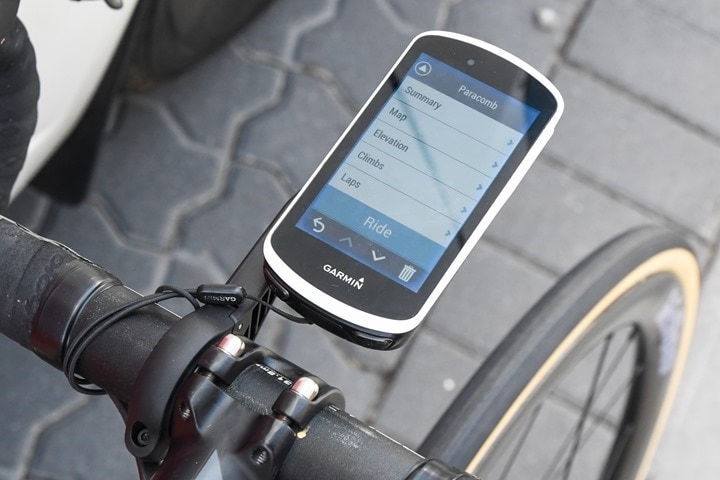





















“*Sunweb is an official sponsored Sigma team.”
Shouldn’t that be the other way around?
My wording on that one is wonky AF, but technically correct (only just barely). ;)
Team Sunweb is officially sponsored by Sigma.
Looks straight from German. This is how they most likely would say it in German.
Nah, just straight from lack of sleep. :)
Ineos in not officially sponsored by Garmin anymore? It definitely was last year: link to teamineos.com
Figures… I had them listed out twice, then figured stars would be clearer. Got lost in the reshuffle. Fixed!
You were right! Sponsorship was not officially confirmed until yesterday:
link to twitter.com
Go figure… :)
Curious: why might teams or riders choose to use a 1030 over an 830 during a race?
Bigger digits to read in a hurry, being used to it (you seem to imply that they might want to keep a 1030 for training?), generally caring much less for a delta of 43 grams than we hobbyists like to believe?
It’s also quite interesting to see the high number of Garmin lanyards deployed. I rarely see those on hobbyists’ bikes, surely because “they don’t look pro”.
well observed. Pros crash a lot during races and it’s easy to lose or damage a computer.
I would love to know what a pro team like EF or INEOS does when their 830s completely lock up like mine does on occasion.
Interesting…
Did you by change take pictures (close up) of the riders data field. Curious to know how the Garmin folks have their units set up.
change=chance! Stupid auto-correct don’t know what I’m trying to type…. And where is the 300 second edit function when you need it
These articles are among the most fascinating on the site — thank you DCR.
Pretty telling even the Wahoo sponsored teams are sticking with BOLT over ROAM.
Here is a new one:
Pyloton: CircuitPython Cycling Computer
Open Source cycling computer that displays heart rate, speed, cadence, and song playback info!
link to learn.adafruit.com
You have to build it yourself. But it is only limited by your imagination.
I m new in the field of Pelotons. The name of the Adafruit Pyloton is probably a composition of the word Peloton and Python. It is extraordinary in the sence that is the only commercially available open source device which I could find to this date.
The name Pyloton suggests, that it was designed to be used as a Peloton, which is great. Since I was looking for a device where it is possible to access the ANT or BLE sensor by a PC application.
The instruction for the Peloton on Adafruits websites is excellent. They have also a forum, but I could not find any entries yet for the Pyloton, it is a new product. Here I could find a demo video:
link to youtube.com
I was looking for a long time for a solution to stream ANT+ sensor data from sports sensors to Matlab or Python. But it’s difficult. In Matlab, there is an example for BLE sensors, but it is very theoretical, no practical application yet. So I was looking for an application for BLE GATT client-server, and then I found the Pyloton.
It s an excellent instruction, and I love it. I was looking for a solution to pull out sensor data from the Pyloton, and I was looking at the Adafruit apps. But I could not see a solution. The circuit is Arduino compatible, and Arduinos can be connected by usb to Matlab or Python. That’s the solution which currently looks most promising to me.
I propose to try to use this device in connection to Matlab or Python on a PC. As far as I know, there is no practical example with sensors in Matlab or Python to this date:
link to mathworks.com
Resellers for Bike computers, when customers asks for a device to send your training data in real-time to Matlab, recommend this device. Shame on Garmin :-(
Excellent device and instruction from Adafruit, but shame on Garmin when a modern cycling computer is compaired to this device, what a modern cycling computer could do with an open standard, which allows users to do anything they want with the device, and not limiting users in making real own developements.
Adafruits device is a new developement, but Adafruits device does not limit users in what is possible with this device. Anything is possible with this device, sooner or later.
There where several Rasperri PI projects with an ANT+ stick, one of a former PhD student of the Swiss Federal Institute of Technology, one with a script which sends sensor data to an MQQT brocker to for instance Matlab or Python.
But the Pyloton Open Source Cycling Computer is simpler. The path goes from a BLE to the Pyloton which consist only of one chip, and from there via usb to Matlab or Python. The software on the Pyloton is similar to the Matlab BLE example code.
The sensor data are already displayed on the Pyloton, so there is nothing to do anymore in Matlab, exept for analysing the data. The path is short, and therefore more stable.
What I miss on the PYLOTON is a open source real-time data aquisition software. It is difficult to access raw data from sporting activies for instance from a Garmin watch. Integration of the Pyloton into OpenSignals could solve this problem:
link to forum.bitalino.com
or a Windows Python project for the PYLOTON with graphs, plots and a format of data (csv?) which easy to access.
The Pytolon is based on a circuit which is Arduino compatible. It should be possible to port the code to a Rasperri Pi. And code which runs on a Rasperri Pi should also run on the new Linux Pinephone.
link to store.pine64.org
Pine, the developer of the Linux Pinephone produces mini PC which are Rasperri Pi compatible. The Linux Pinephone and a Rasperri Pi are very close to each other. Therefore, the code which runs on the Pytolon Open Source Bike Computer should also run on a Linux Pinephone in theory. This would be a very handy Bike Computer which has the size of a large Android Phone.
Although I don t have any followers for this project yet, I m optimistic that this project will be successful, and will become attractive to more and more people, the easier the setup becomes.
Summary:
The GATT client-server for Bluetooth smart (BLE) is a path to stream BLE sensor data. It can be found in a Matlab example code without any practical example yet.
But the same code is in the Pytolon Open Soure Bike Computer, and it has been demonstrated with heart rate and cadence sensors that it is working there. But the same code could also run on a Rasperri PI, a Linux Pinephone, a Linux PC or as mentioned before on a PC running Matlab.
It is not about the right device, it is about the right code and the right sensors. This GATT client-server works as far as I know only with Bluetooth smart (BLE) sensors, and it is easier to use in my view than to use a ANT+ stick with ANT+ sensors.
Make yourself free from the dependency of Gamin. Read the 55 pages of instruction for the Pyloton Open Source Bike computer (pdf printout):
link to cdn-learn.adafruit.com
And build your own Pyloton. The only problem which is not descripted is how to read out sensor data from the Pyloton usb port. But this should be possible. There are many instructions for Matlab or Python how to connect to an Arduino through usb, and the Pyloton is Arduino compatible.
Here is a picture of the Pyloton, the most advanced Open Source Bike computer available on the planet, which that displays heart rate, speed, cadence, and song playback info. Fortunately, it is almost a open source sports watch with the Adafrui’ts Little Secret – CLUE:
link to youtube.com
which can be programmed with Circuit Python to add support for more sensors, connection to a PC, etc. I already printed out the 55 pages pdf manual hand out to work it through. An open source bike computer software is rare to find. When you understand how it works, you can add more features which fits for your needs.
There is also a variant of the Adafruit Clue as a Open Source Sports Watch, currently limited to the option to count steps:
link to learn.adafruit.com
The design is really extraordinary :-)
The code is great of the Pyloton Open Source Bike computer and the CLUE Step Counter, but I miss a version of the BLE GATT client-server for the Rasperri Pi, which could serve as a data logging device for sporting activites in Matlab friendly .csv format. And I miss a version of the BLE GATT client-server for the new Linux Pinephone:
link to store.pine64.org
The Pinephone is a real Linux computer, and software developement on Linux is more comfortable than software developement for the Clue or the Rasperri PI.
The Pinephone has a formfactor, which is more attractive as a Bike Computer than the Pyloton. The could could eventually be ported from the Pyloton to the Linux Pinephone. But the Pyloton is a good device to start with, and to get to know and to start developing the BLE code.
Sorry, I meant the code could eventually be ported from the Pyloton to the new Linux Pinephone, but this needs to be tested, a new user interface is necessary, etc.
Someone in the PinePhone community suggested to make out of the PineTime an Open Source Sports watch.
link to forum.pine64.org
Sorry for repeating this topic again and again. But sooner or later companies like Garmin or Polar will be confronted with more and more users asking this question: Why is is not possible to stream sensor data from a Garmin or Polar watch to my favorite PC application? It does not work with a Garmin watch or a Polar watch in an easy way. But as far as I know, it should be possible to connect the Pyloton open source bike computer over usb to Matlab or Python and to stream sensor data over usb:
link to forums.adafruit.com
It is the easiest way for a live-stream to scientific data analysis software like Matlab or free and open source data analysis software in Python I could find after a long, long, long search.
A discussion how to build your own Peloton open source bike computer or your own open source sports watch based on a Linux Pinephone can also be found in the Pinephone community:
link to forum.pine64.org
It should also be possible to run Rasperri PI ANT+ bike computer projects on the Pinephone, which is the better platform for a Bike Computer than a Rasperri PI:
link to forum.pine64.org
And here is an example of a low-cost high quality Peloton:
link to youtube.com
This low-cost high quality QBike Peloton Bike computer should in theory also run on a Pinephone with ANT+ stick, but the Pinephone community mentiones at least one hardware issue (see discussion there) affecting aspects of USB functionality, and recommends to stick to BLE projects, since BLE is built into the PinePhone.
I am still looking for a passionate programer who sees like me the great potential of the Adafruit Open Source Sports computer, and ports the software to a costumer friendly platform like Python or to a Linux phone like the Xiaomi Poco F1, which makes it possible to integrate contemporary software like MQTT, Grafana, Influx database, etc., and to add more BLE sensors:
link to petergamma.org
Most live-streaming options are available for peloton bike computers. Garmin has closed source devices with proprietary .fit file format, ANT+ sensors and data processing in Garmin connect. For people who are looking for open source projects with live-streaming option, .csv data format and freedom of choice for data processing applications, there are only few projects available.
Aren t Garmin watches based on Linux? As far as I know, nobody was able to hack Garmin watches yet. Therefore, it is time for an open source alternative. I propose Linux Asteroid OS watches, which have a great potential. The option to install standard Linux software on it, or to use desktop Python software are major advantages.
Unfortunately, I am not a programmer, but I can deal with Matlab and Python scripts. I reviewed some Linux Asteroid OS watches on my web site. I am looking for programers who are interested in these great watches, who see the potential of these watches. I first step would be to port the Adafruit Open Source Bike Computer to a Linux phone, or to Linux Asteroid OS watch:
link to petergamma.org…e-pyloton/
The Adafruit software is a professional BLE sports computer, which can compete with Garmin devices. There are only few open source sports devices available. Linux Asteroid OS watches paired to BLE sports sensors is the most professional option.